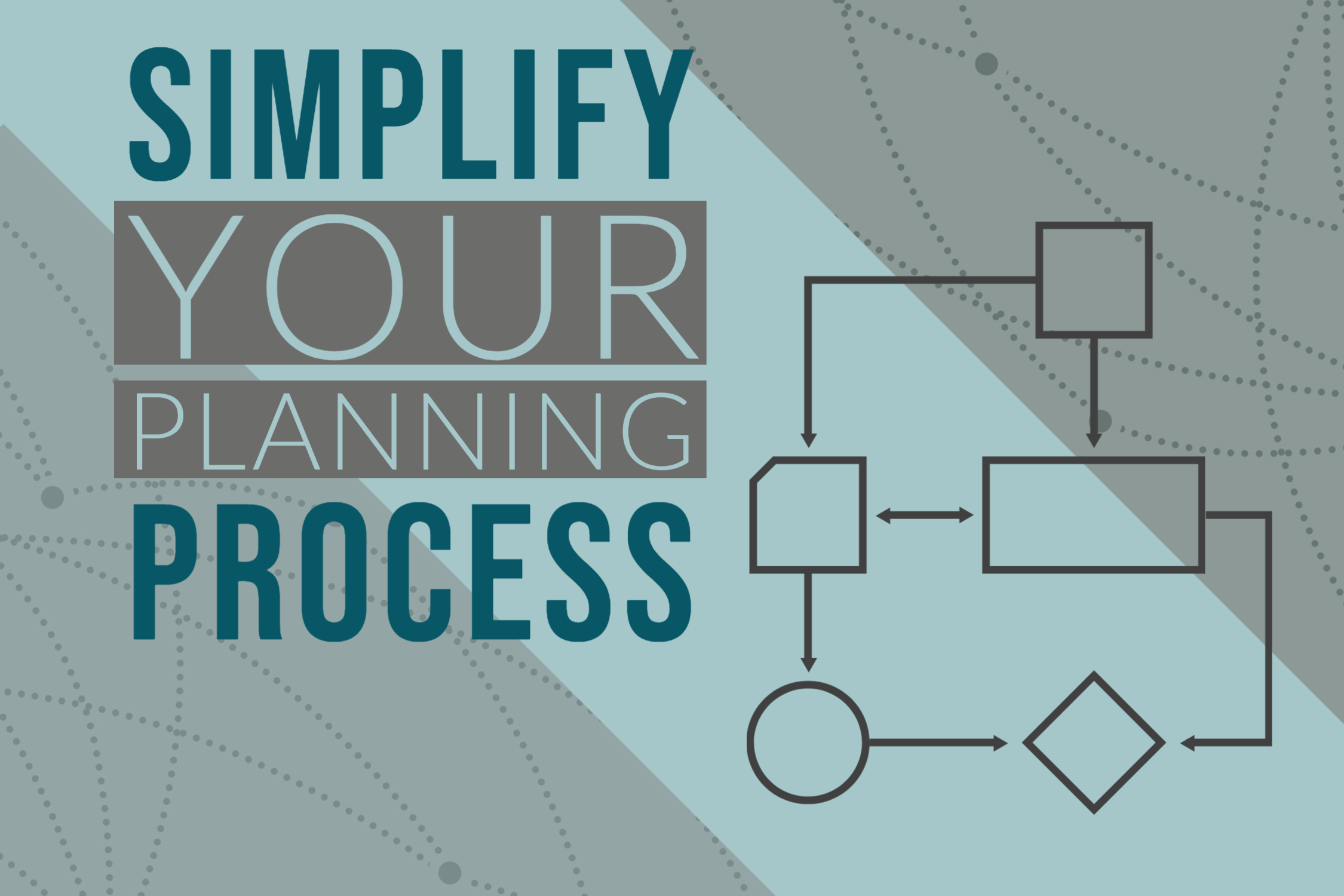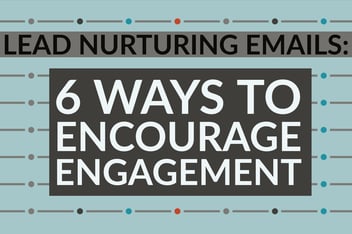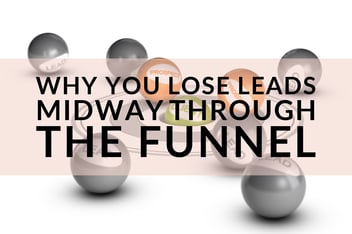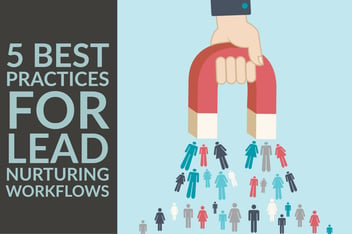How To Use Our Lead Nurturing Workflow Template (free download)
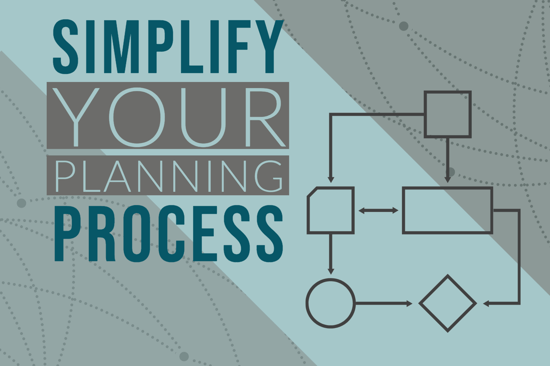
I know that lead nurturing is something a lot of marketers are trying to figure out and perfect. That’s why the #2 download from our Inbound Marketing Learning Library is our Lead Nurturing Workflow Template. (See the rest of the top 10 here.)
It’s not surprising that many of you are working to incorporate lead nurturing. Just check out a few of these stats:
-
96 percent of visitors who come to your website aren’t ready to buy (yet).
-
48 percent of businesses say most of their leads require “long cycle” nurturing with many influencers.
-
Targeting users with content that matches their stage in the sales funnel yields 72 percent higher conversion rates.
-
Nurtured leads have a 23 percent shorter sales cycle.
-
67 percent of B2B marketers say they see at least a 10 percent increase in sales opportunities through lead nurturing, with 15 percent seeing opportunities increase by 30 percent or more.
Nurtured leads produce, on average, a 20 percent increase in sales opportunities versus non-nurtured leads.
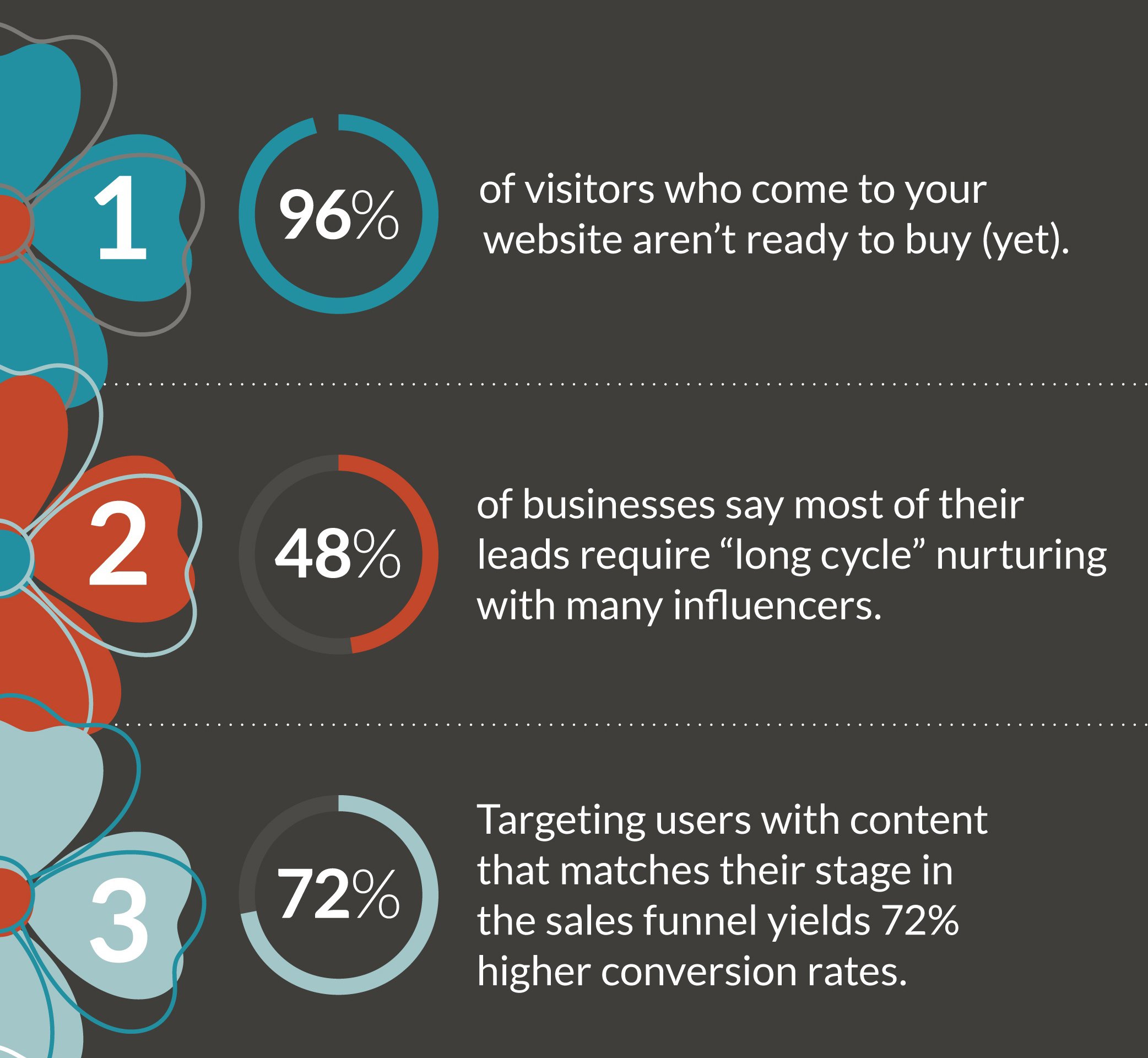
(See the full lead nurturing infographic here.)
There are a lot of benefits to be found in automated lead nurturing. But while the system is automated, meaning it works behind the scenes seamless once it is set up, planning a lead nurturing workflow requires some work upfront.
That’s why we put together a template to guide the process. Here’s how to put it to use as you establish your next inbound marketing campaign and lead nurturing workflow.
First, download the free nurturing workflow template here. That was easy!
Now, let’s look at each sheet on the template (which is an Excel document).
Campaign Content Library
Think of this first sheet in the template as your inventory sheet.

Use this sheet to list all of the content offers and other content, such as blog posts, related to this campaign, including awareness, early engagement, consideration and evaluation materials. By listing your offers and other content here, you can quickly identify areas of the sales funnel in which you may need to beef up your offerings. If you are also using our Campaign Planning Calendar Template, you likely have most of this information already at your fingertips.
Having all of your offers and other related content listed by stage will also provide an easy visual of how a visitor might transition from one stage to the next.
If you need help filling in your campaign with appropriate content for each step along the buyers’ journey, check out these blog posts:
-
Consideration Stage Marketing Content Sets The Stage For A Sales Win
-
5 Downloadable Assets To Kick Off Your Next Inbound Marketing Campaign
Be sure to list not only additional downloadable offers, but also content such as blog posts that you can use to engage leads in a non-threatening way by simply offering additional useful content with asking for more information from the lead.
Landing Pages Workflow
This sheet outlines how you will use landing pages, and the following thank you pages, to present offers in the next stage so that you can move leads through the sales funnel.
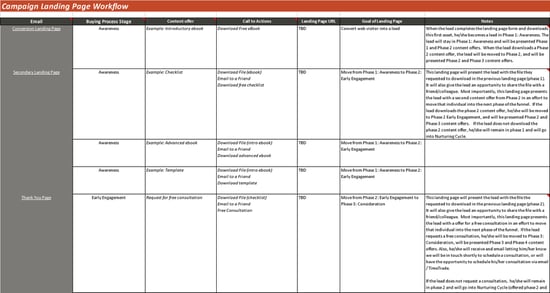
Each downloadable offer in your campaign will have a landing page with information about the benefits of the offer, an image, possibly even a video, and then a form that allows you to capture lead information and enter the lead into your automated nurturing program.
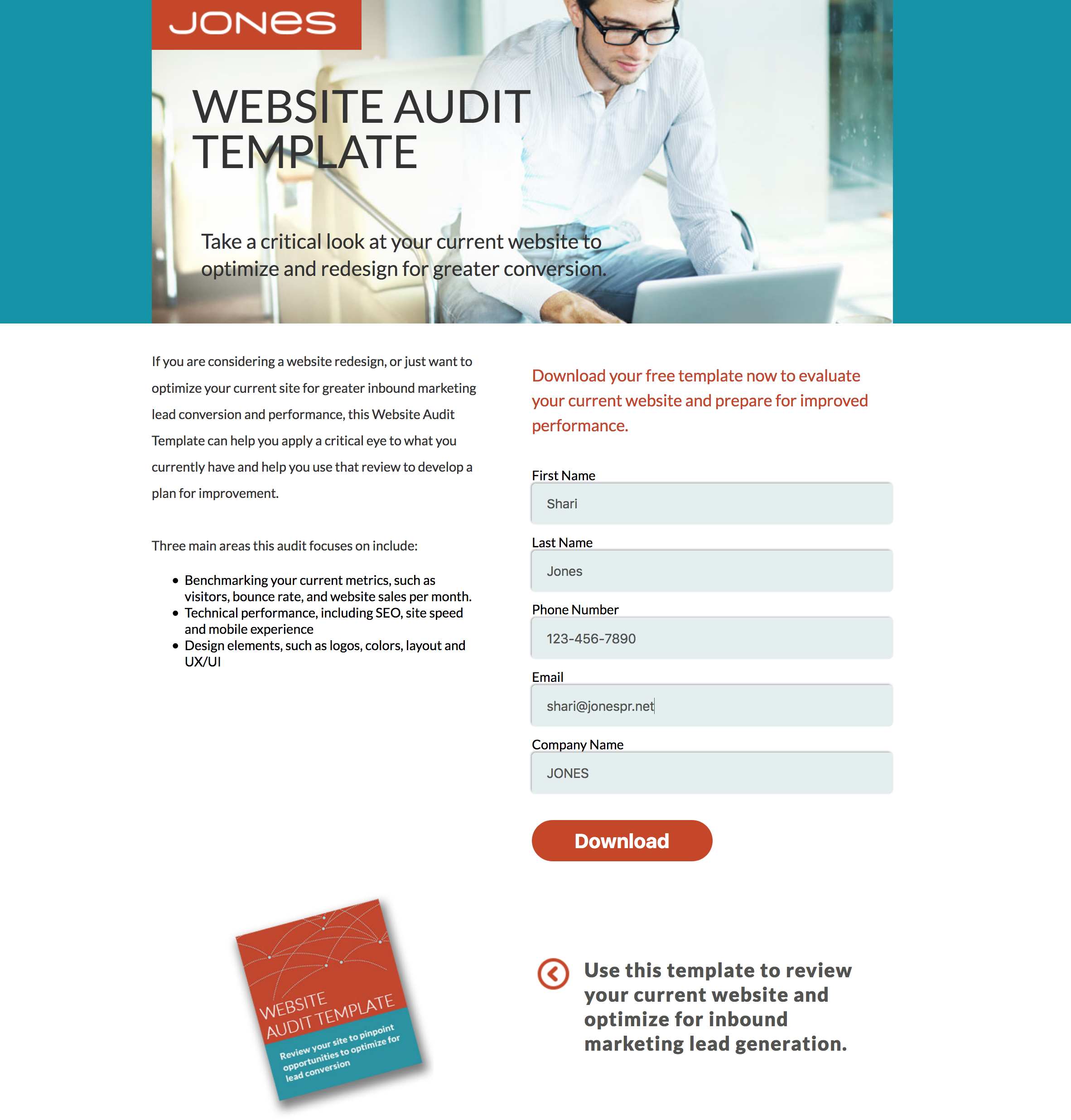
Once the visitor completes the form to download an offer, they should then be taken to a secondary landing page from which they can click for the actual download. This page also provides you with an opportunity to ask the lead to do a few other things: share the offer with others and access an additional, related offer. For example, if they download an introductory ebook, the secondary landing page would offer a related checklist as a follow-up.
Your landing page flow might also include an additional ‘thank you’ page with one last more direct offer, such as linking the lead to a page where they can schedule a meeting or request a consultation.
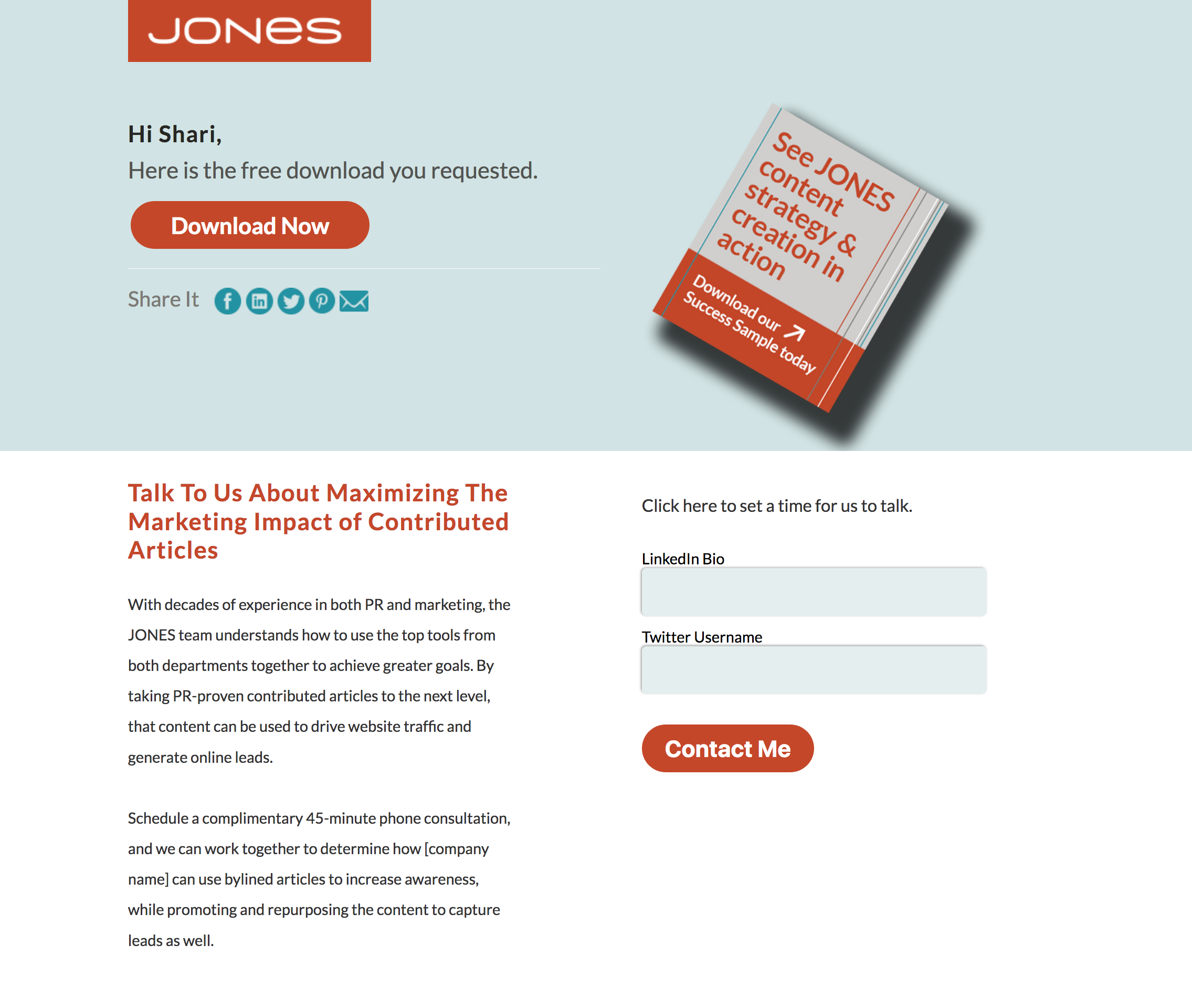
By outlining the progression from initial offer to secondary offer to consultation, you can visualize how a lead moves from one stage of the sales funnel to the next.
Obviously, if in that first interaction, a lead continues through all of those offers and does request a consultation, you have a win! In most cases, however, the process will be more drawn out. That is where the nurturing email workflow comes in.
Nurturing Workflows Path
This sheet is for planning and tracking follow-up nurturing emails to your leads, based on what stage of the buying cycle or sales funnel they are in. By establishing an automated nurturing system, you ensure continued contact with leads in a strategic order to guide them toward a buying decision.
Especially in B2B industries or in the B2C sectors with longer sales cycles, visitors to your webpage aren’t likely to progress from accessing their first offer all the way to a consultation or purchase in a single session. They are likely to need more information and more time to consider their options before making a decision. Automated lead nurturing allows you to continue to foster a connection by offering additional useful content and information over a period of days, weeks or months.
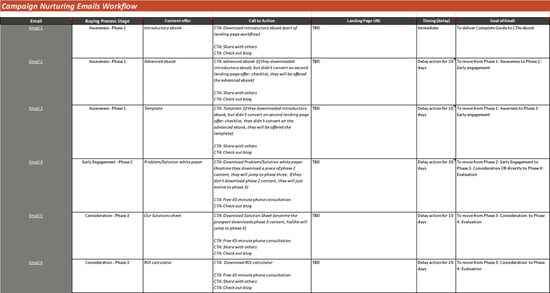
With this template, you can plan out each email that will be sent to leads after they access an awareness level offer. There are two different philosophies you can use to guide what the series of emails will offer to your leads:
1. Campaign-specific workflows tie directly into a specialized campaign, with every offer very tightly related to the lead’s first interaction with your site. For example, in our campaign-specific workflows, a lead who downloads our Business Blogging: Do This, Not That ebook, would then receive emails offering additional business blog resources such as as our Business Blog Calendar Template and Blog Writing Templates. This type of workflow could also be useful if you have multiple campaigns with differing offers based on a lead’s geographic location, industry or job title.
2. General workflows are based solely on the stage of the sales funnel the lead is currently in. For example, all leads who download an awareness level offer receive the same email series aimed at getting them to move to the consideration stage. In our general workflow, because most of our website visitors and leads are interested in inbound marketing as a lead generation and sales enablement tool, we offer leads an Inbound Marketing Scorecard after they download an awareness level offer, with that scorecard covering a wide range of specific topics within inbound marketing. These generalized workflows can streamline your efforts if you don’t have the resources to develop and manage a large number of campaign- or topic-specific workflows.
If you choose to use general workflows, HubSpot recommends creating four basic workflows:
-
Awareness-to-Consideration stage
-
Consideration-to-Decision stage
-
Re-engagement Awareness-to-Consideration
-
Re-engagement Consideration-to-Decision
The first two workflows are those that kick off as soon as a new lead enters your system by downloading or accessing an offer. Re-engagement workflows would be initiated some set time — possibly even up to 6 months — after a lead has received all of the emails in the initial workflow without reaching the goal.
About that goal — it is important to remember that each workflow you create should have a specific goal. Typically, the goal of an awareness-to-consideration stage workflow would be that the lead access an offer that is in the consideration stage of the sales funnel. For example, if they initially converted on an offer for a whitepaper, the goal may be for them to then access a consideration level offer such as an ROI calculator. If a lead has converted once on a consideration level offer, the goal of the workflow initiated at that point might be for them to request a consultation or download a product comparison sheet, along with some other indicator that they are now meeting the criteria for a marketing-qualified lead.
Once you have determined the goal of your workflow, take time to think about your target market and how they typically progress through a buying cycle. Use that knowledge to determine the timing of your emails — if your product or service typically has a buying cycle that lasts several months, you want to space out emails more over time than you would with a product that buyers typically decide on in just a few days.
While the template lists primarily additional offers as the content to be included in emails, check out this post about best practices for lead nurturing workflows, which reminds us to also give a little without expecting anything in return in some emails. In other words, use some of your nurturing emails to provide links to non-gated material such as blog posts, without asking leads to reconvert and fill out forms or provide additional information.
But don’t overlook the opportunity to include some calls-to-action in the emails, including inviting leads to share the email and/or downloadable content with others or to sign up for a newsletter or blog updates. And always be sure your emails include contact information — you never know when a lead will skip forward in the buying cycle and want to reach out directly.
(Find more tips on how to maximize the effectiveness of your lead nurturing emails in this quick guidebook: Email For Inbound: Do This, Not That.)
As you use our Lead Nurturing Workflow template, remember that the suggested timing, offers, and CTAs are just suggestions based on general best practices. Your customer personas and specific situation will require a personalized approach. For another example, download our Lead Nurturing Toolkit, which includes a workflow sample that shows the actual emails for one of our clients and can help you understand the progression through the sales funnel.
As with nearly every aspect of an integrated marketing and public relations program, the more you can coordinate content strategy and content creation across channels, the more effective and efficient your efforts will be. That is one reason we are dedicated to being a full-service firm — we want to help take our clients from brand development through complete campaigns seamlessly. If you are looking for a partner to implement inbound marketing and online lead generation and sales, from blog posts to nurturing workflows, let’s chat. You can reserve time for a no-obligation call on my calendar here.
-1.png?width=1652&height=294&name=Jones(RGB)-1.png)

